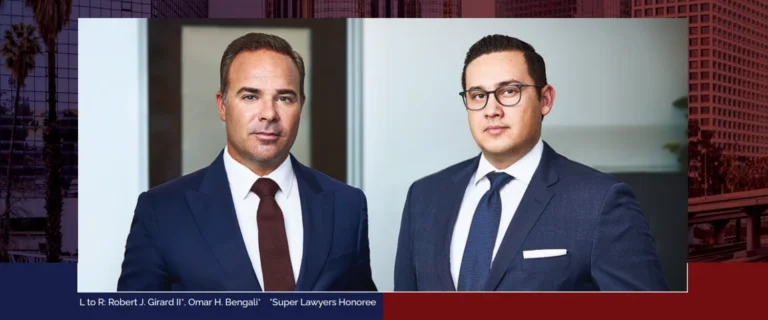The Top 5 Investment Scams You Need to Know About (And How to Protect Your Assets)

Behind every investment fraud lies the wreckage of retirement dreams, college funds, and financial security. When clients walk through our doors at Girard Bengali, they rarely arrive as victims of obvious schemes, but rather as targets of sophisticated deceptions that exploited specific regulatory gaps and supervisory failures. To best protect yourself and your assets, it’s important to be able to recognize the warning signs of fraud before significant damage occurs. Here are five of the most common investment scams that continue to evolve and threaten investors today.
1. Broker Misconduct and Excessive Trading
Broker misconduct remains a persistent threat to investors’ financial wellbeing. Excessive trading (churning) occurs when brokers make unnecessary trades simply to generate commissions at their clients’ expense. This practice prioritizes the broker’s financial interests over their fiduciary duty to clients.
Most investors never realize they’ve become victims of churning until substantial damage has occurred. The practice thrives in environments with inadequate supervision and compliance oversight. Brokerage firms that fail to implement proper monitoring systems for excessive trading or unsuitable investments may be held accountable through investment fraud litigation.
Warning signs of potential churning include dramatic increases in transaction frequency, declining account value despite market gains, and transactions that clearly contradict your stated investment objectives. Requesting a detailed breakdown of all trading fees and commissions can sometimes reveal concerning patterns that merit further investigation.
2. Unsuitable Investment Recommendations and Failure to Supervise
Investment advisors and brokers have a legal obligation to recommend only investments that align with their clients’ financial situation, investment objectives, and risk tolerance. Unsuitable investment recommendations occur when financial professionals disregard this duty, often resulting in significant client losses.
These violations typically manifest in several ways: recommending high-risk investments to conservative investors, over-concentrating portfolios in specific sectors or securities, or selling complex products (like structured notes or non-traded REITs) to clients who don’t understand the risks involved. FINRA regulations specifically prohibit such practices, providing grounds for potential recovery through arbitration.
Brokerage firms also hold responsibility through their duty to supervise their representatives. When firms fail to implement adequate supervisory systems to detect and prevent misconduct, they become liable for resulting investor losses. Our FINRA arbitration practice frequently addresses these supervisory failures, which often enable multiple instances of misconduct affecting numerous clients.
Recent FINRA enforcement actions have increasingly focused on firms’ supervisory obligations regarding complex products. Investors who have been recommended unsuitable investments should consult with experienced securities attorneys to understand potential recovery options through FINRA arbitration or other legal remedies.
3. Unregistered Securities and Private Placements
Many investment frauds involve securities that haven’t been registered with regulatory authorities, exempting them from crucial disclosure requirements designed to protect investors. While some unregistered offerings are legitimate under specific exemptions like Regulation D, they carry heightened risks and reduced regulatory protection.
These private placements often target accredited investors, supposedly sophisticated individuals with substantial assets or income. However, the accreditation process frequently relies on self-certification rather than verification, creating opportunities for misrepresentation and fraud.
Promoters of fraudulent private placements typically emphasize exclusivity and limited availability while downplaying risks. They may falsely claim to have proprietary technology, exclusive contracts, or revolutionary business models that justify extraordinary returns. The limited disclosure requirements for private placements make it easier to conceal material information that would reveal the fraud.
Before investing in any private placement, verify the offering’s exempt status through the SEC, thoroughly investigate the company’s operations beyond promotional materials, and consult with an independent financial advisor who has no stake in the investment.
4. The Ponzi Scheme
Ponzi schemes remain one of the most devastating investment frauds, costing Americans billions annually. These schemes pay existing investors with funds collected from new investors rather than actual investment returns. The illusion of stability often continues until new investor recruitment slows or too many investors attempt to withdraw funds simultaneously, causing the entire structure to collapse.
Recent Ponzi schemes have become increasingly sophisticated, masquerading as legitimate alternative investments. Many now operate under the guise of cryptocurrency trading platforms, foreign exchange programs, or exclusive real estate investment opportunities. The facade of exclusivity–being allowed to “get in” on a rare opportunity–often blinds investors to glaring warning signs.
If you’ve been victimized by such a scheme, promptly consulting with an attorney with expertise in investment fraud litigation may improve your chances of recovery. As is true with most fraud, documentation of all transactions and communications becomes key evidence in these cases.
5. Cryptocurrency Fraud
The cryptocurrency market has become a prime hunting ground for fraudsters due to its relative regulatory freedom and technical complexity. Two particularly devastating schemes have emerged: pump and dumps and rug pulls.
Cryptocurrency pump-and-dump schemes involve artificially inflating the price of a low-value token through coordinated buying and misleading promotion, often through social media influencers, fake news, or manipulated trading volumes. Once prices rise significantly, the orchestrators sell their holdings, causing prices to collapse and leaving regular investors with worthless assets. These schemes often target low-capitalization, thinly-traded tokens that are easily manipulated.
Rug pulls represent another devastating crypto fraud where developers create seemingly legitimate cryptocurrency projects, complete with professional websites, detailed whitepapers, and aggressive marketing campaigns. After raising substantial investor funds, the creators simply disappear, taking the money and leaving investors with worthless tokens. Unlike traditional securities where issuers must provide extensive disclosures, many crypto projects operate with minimal transparency.
Effective securities fraud protection in the crypto space requires extensive due diligence: researching development teams thoroughly (including verification of their claimed credentials), examining code repositories for active development, and investigating the token’s actual utility beyond speculative value. Most importantly, never invest based solely on social media hype or promises of extraordinary returns.
Essential Scam Prevention Tips
While these investment scams continue to evolve in sophistication, investors aren’t powerless against them. Recognizing warning signs early requires both vigilance and practical strategies. The most effective defense combines knowledge with action, understanding not just what these schemes look like, but implementing concrete steps to shield your investments from potential fraud. The following scam prevention tips can significantly reduce your vulnerability to even the most sophisticated investment frauds.
Develop a Personal Due Diligence Process
Create a systematic approach to evaluating every investment opportunity, regardless of who presents it or how appealing it seems. This process should include researching the investment company’s regulatory history, reviewing audited financial statements, and verifying the registration status of both the investment and the person selling it.
For example, before investing with a broker, check their CRD number through FINRA BrokerCheck to review their employment history, regulatory actions, and customer complaints. Similarly, use the SEC’s EDGAR database to verify that securities being offered are properly registered or qualify for an exemption.
Legitimate investment professionals understand and respect thorough due diligence. If someone discourages your research or becomes defensive when questioned, consider this a significant warning sign. Proper investigation often requires obtaining and reviewing multiple documents, including offering memoranda, audited financial statements, and regulatory filings—all of which should be readily provided.
Understand the Investment Completely
Never invest in anything you don’t fully understand. Legitimate investment professionals welcome questions and provide clear, consistent explanations without evasion or pressure tactics.
Ask specific questions about how the investment makes money, what factors could cause losses, and what fees are involved. Request written materials explaining the investment’s structure, risks, and performance history. If the answers seem overly complex or change with repeated questioning, consider this a significant warning sign.
Understanding should extend beyond the investment itself to the broader market conditions and regulatory framework in which it operates. For example, if considering a real estate investment trust, you should understand not just the specific properties involved, but also how economic factors like interest rates, zoning regulations, and market trends might affect performance.
Monitor Your Investments Continuously
Regular review of your investment accounts can help identify potential fraud before losses mount. Compare monthly statements against your expectations and immediately question discrepancies. Watch for unauthorized transactions, unexplained fees, or dramatic changes in account value that don’t align with market conditions.
Pay particular attention to closed positions showing significant losses, as these may indicate churning or unsuitable investments. Also, verify that your actual asset allocation matches your stated investment objectives and risk tolerance.
Effective monitoring means tracking not just account values but understanding the underlying transactions. Question any changes to your investment strategy that weren’t explicitly authorized. Request detailed transaction reports that show all trading activity, including dates, prices, and associated fees. If your broker or advisor seems reluctant to provide this information or offers convoluted explanations, this merits further investigation.
Maintain Appropriate Skepticism
The most effective scam prevention tips involve maintaining healthy skepticism, especially toward unsolicited investment opportunities. Be particularly cautious of investments presented through cold calls, unsolicited emails, or online advertisements promising returns that significantly outpace the market average.
Remember that legitimate investments don’t require immediate decisions. Take time to research thoroughly, consult trusted advisors, and consider alternatives. If someone pressures you with artificial deadlines or claims of limited availability, this often indicates an attempt to prevent proper due diligence.
Skepticism should extend to testimonials and references, which can be fabricated or come from unknowing participants in the scheme. Instead of relying on provided success stories, seek independent verification of performance claims and business operations. Consider consulting with an attorney or accountant who has experience in the specific investment area before committing substantial funds.
Diversify Investment Sources
Just as you diversify your investment portfolio, diversify your information sources when researching investments. Rely on independent research rather than promotional materials provided by those selling the investment. Consult multiple sources including regulatory websites, independent financial publications, and industry analysts.
For example, when considering a mutual fund, review its prospectus but also check independent ratings from firms like Morningstar, examine its expense ratio compared to similar funds, and research the fund manager’s track record across different market conditions.
Information diversity should also include seeking contradictory viewpoints. Actively search for negative information or criticism about the investment to balance against promotional materials. Legitimate investments have both advantages and disadvantages; be wary of opportunities presented as having no downsides or guaranteed returns.
When You Need Help
If you believe you’ve been victimized by investment fraud, taking prompt action matters. Document everything related to the investment, including communications, account statements, and promotional materials. File complaints with appropriate regulatory authorities such as FINRA, the SEC, or your state securities regulator.As experts in investment fraud litigation, our firm has helped investors recover tens of millions of dollars on behalf of injured or defrauded investors. For a confidential consultation with attorneys experienced in securities and investment fraud cases, contact Girard Bengali. While not every investment loss indicates fraud, understanding your legal options is an important first step in protecting your financial future.











